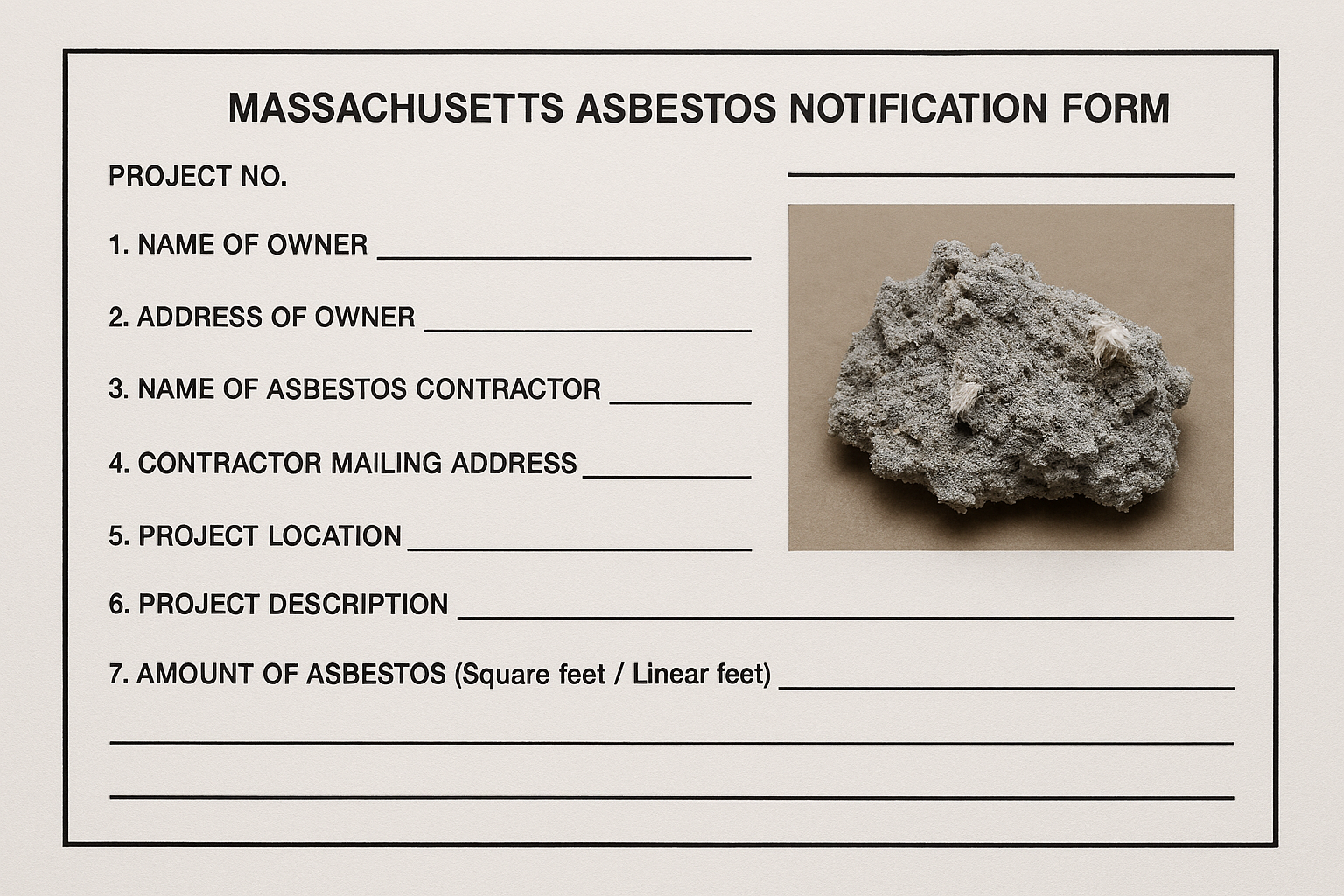Asbestos is a highly regulated hazardous building material that was not banned until 2024. Materials containing 1% or more asbestos fibers by weight are regulated due to their link to cancer and respiratory diseases. The Environmental Protection Agency (EPA) and state agencies oversee asbestos abatement, construction, and demolition projects. While federal laws provide a framework, state-specific notification requirements vary. State asbestos notification requirements began to appear in the United States in the 1970s and 1980s as awareness of asbestos hazards grew and regulations were implemented through the EPA.
Cashins & Associates : Resources
Asbestos State Notifications - What You Need to Know
Renovating a Building? Here is what you need to know about asbestos.
The Asbestos Hazard Emergency Response Act (AHERA), passed in 1986, required the EPA to regulate inspections in public and non-profit schools, leading to the National Emission Standards for Hazardous Air Pollutants (NESHAP). NESHAP specifies work practices for asbestos during demolitions and renovations in all buildings, excluding residential buildings with four or fewer units. Building owners or contractors must notify state agencies before such projects.
States must follow federal regulations regarding asbestos; however, federal laws are not thoroughly restrictive. This has caused several states to develop their own laws with stricter rules. Some states have laws that require all occupants, workers, and visitors to be informed about the presence of ACM. Some states even require sellers to disclose the presence of asbestos in their homes. At the very least, the state agency in each U.S. state must be notified before demolition or renovation work is performed. The remainder of this discussion will cover the Massachusetts state notifications and the concrete steps you must follow.
Massachusetts mandates notifying the Department of Environmental Protection (MassDEP) and the Department of Labor Standards (DLS) at least ten working days before construction or demolition work begins. These 10 days exclude weekends and holidays. Notifications are required for construction, demolition, and asbestos abatement projects. Renovation projects are considered a type of demolition. MassDEP also requires a separate asbestos notification for any asbestos abatement, removal, or disposal project. Building owners must hire a DLS-certified asbestos inspector to collect samples for asbestos analysis before work begins. Inspections are required prior to the renovation of ALL BUILDINGS regardless of age. Failure to comply can result in penalties and risks to worker safety and contaminating the building itself. The inspector provides sample results, which are used to file state notifications.
Steps for Filing Notifications in Massachusetts:
AQ06 Notification
- The licensed asbestos inspector provides their findings and license number to the building owner or contractor (GC).
- File the AQ06 notification at this link: File AQ06.
- Ensure the AQ06 is filed at least ten working days before the project’s start date.
- Complete Section C of the AQ06 form, including details about the asbestos survey and abatement activities. If ACM is present, provide the inspector’s name and certification number.
AQ04 (ANF-001) Notification
- If asbestos is found, the building owner or GC must file an AQ04 notification: File AQ04.
- Retain a licensed asbestos abatement contractor and include their DLS license and certification numbers in the AQ04 form.
- After filing, the MassDEP will issue an Asbestos Notification Form (ANF-001) number.
- Include the ANF-001 number in Section C of the AQ06 form if asbestos was found.
MassDEP notifications meet the requirements set by state, DLS, and the federal EPA. After filing, it is essential to inform the local board of health and fire department about any project involving asbestos-containing materials (ACM). Once the necessary state notifications have been submitted to MassDEP, the notifying party must inform the town, city, or municipal board of health and fire department that workers will be present inside a containment area or building with ACM.
In summary, Massachusetts requires a notification ten (10) working days before work begins on the construction or demolition of a building. A separate notification needs to be filed with MassDEP for each project. The state notification requirements and work practice standards contained in the regulations protect public health, worker safety, and the environment by preventing the release of asbestos emissions into the ambient and indoor air.
If you have an upcoming renovation project, we can perform the necessary inspections and guide you through the regulatory process. Click the button below and one of our asbestos experts will get back to you right away.
For more information, visit: MassDEP Asbestos Guidelines.





